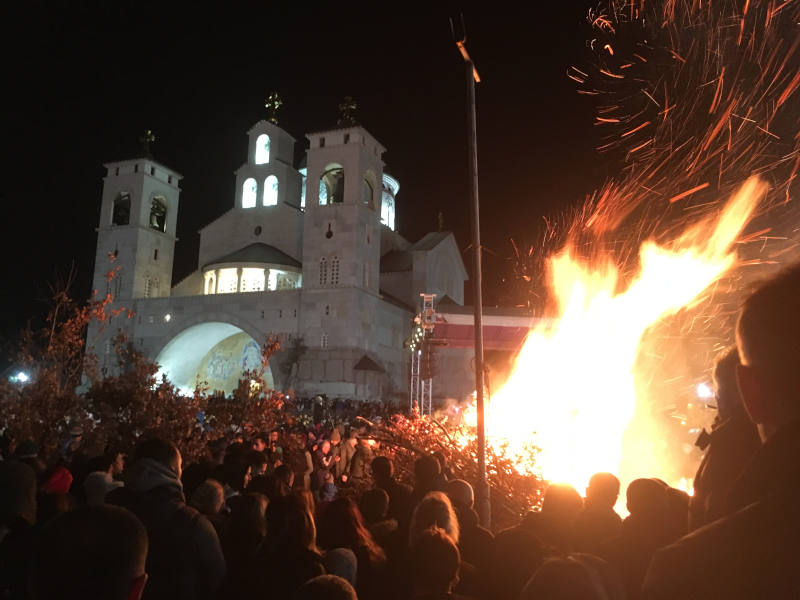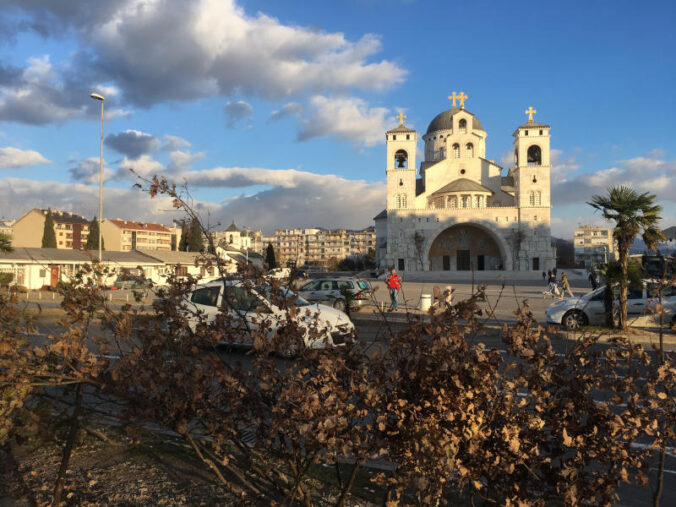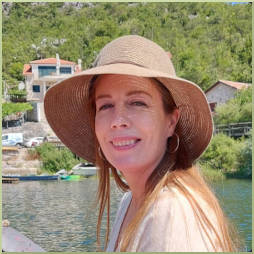Two really common questions I see from tourists coming to Montenegro in the winter are:
What is Christmas like in Montenegro? Is anything open on Christmas Day, December 25th?
The answer is everything… because in Montenegro Orthodox Christmas is celebrated on the 6th and 7th of January! The rhythm and importance of the winter holidays is completely different to how it is celebrated in English-speaking countries, so let me explain how it works here.
I’m from Australia, so I was used to December 25th being the big Christmas holiday involving gifts, family, and big lunches. New Year’s Eve for me was a social celebration involving parties with friends, champagne, fireworks (and falling asleep at 10pm if you’re over 40).
However, in Montenegro, December 25th is known as Catholic Christmas and it’s a normal working day. While you can find the odd restaurant offering Christmas lunches for expats and some church services at Catholic churches, it’s otherwise a normal day – except for the locals making frenetic winter holiday plans and getting ready for the real event – New Year’s Eve!
December 31st, New Year’s Eve, in Montenegro is HUGE. It’s a fascinating mix of Western Christmas traditions and New Year’s traditions all in one. A lot of the symbols – Santa Claus, Christmas trees, lights and decorations – that we associate with Christmas are linked here with New Year’s instead.
It’s the big culmination to the year with parties, concerts and plenty of drinking… but it’s also a time for family gatherings in the evening and presents for kids from Santa. Once the kids grow up, they move on from the family celebrations and head out in their best clothes to a typical New Year’s party as we know it.
Local TV stations put on all night music concerts of Balkan music. There is also always a huge concert in Budva featuring famous and now elderly Balkan singers (almost every year it’s Zdravko Čolić).
It’s also the beginning to the winter holiday break, two weeks of school holidays that most people also take off work, that lasts from New Year’s to the weekend after Orthodox Christmas. A lot of restaurants take their only breaks of the year for a few days after New Year’s Eve.
Orthodox Christmas itself is a wildly different experience to Western Christmas. It’s much more about family and religion than consumerism and gift-giving, with some pagan rituals scattered in between.
In the days leading up to Orthodox Christmas, you’ll see people selling oak branches on the side of the road and outside churches. This is for Badnji Dan – Orthodox Christmas Eve – when a family buys an oak branch – a badnjak – or cuts one from their own trees if they live in a village, and then for good luck, the man of the family sets it alight.

People do this (somewhat dangerously) in their apartments, or at huge public bonfires at the main church in each city. People take their oak branch and throw it on the communal fire. In Podgorica this is outside the Hram and is a serious cultural experience involving a concert of gusle music and deafening firecrackers set off metres away by local teenagers.
There’s also a big family meal on Orthodox Christmas Eve, and traditionally it is the last day of the six-week Christmas fast, so it relies heavily on beans, potatoes and vegetables and doesn’t include meat, fish or dairy.
January 7th, is Orthodox Christmas Day. It’s a public holiday where absolutely everything is closed and people spend time with their family, leading up to the big lunch in the afternoon.
It’s usually a family gathering, much like western Christmas, but without the gift-giving. The religious fast has now ended, so this is a huge meal involving all kinds of meat! There’s also a special kind of Christmas bread called česnica, baked with a coin inside – and whoever gets the coin gets special luck for the year ahead.
Around this time of year, you’ll also hear a lot of firecrackets (and even gunshots, if you live outside the cities). Firecrackers and fireworks are legal and easily purchased and teenagers LOVE throwing them in apartment entrances and at unsuspecting people’s feet.
You’ll hear firecrackers at random times all through the holiday season, with peaks at New Year’s, Orthodox Christmas, and then Orthodox New Year’s on the evening of January 13th (not hugely popular but still celebrated by more religious residents).
I hope you enjoy your Christmas in Montenegro – there aren’t many places in the world where you get two Christmases every year!


Hi Kate. This sounds wonderful! You write very nicely, I think I’ve absorbed this whole blog in just a few happy hours.
We’re Australian digital nomads (on one income atm). We spent last year in East Java, Indo and currently in Thailand (south). I loved Thailand 15-20 years ago, but not so enamoured now, perhaps after experiencing the wild ride of local-ish life in a Javanese city.
We’re considering Montenegro to buy a little house, as we keep stumbling across it in a variety of blogs and vids. The way you describe it sounds like it has some similarities to SE Asia (the delightful and the upsetting). Would you think people who enjoy living here might enjoy living there? Without the food…
You wrote somewhere that you’d argue it’s actually cheaper to live there than in Chiang Mai, how so?
It sounds like you spend a lot of time exploring nature and old towns and ruins and such, the weather is good enough to be outside a lot? Are there really so many interesting places to get out n about? A lot of wildlife?
Is it hard to make a variety of friends? In Indo we had a mix of local and expat friends, in Thailand it feels a bit more segregated. What’s it like there? I love that you learn the language, that’s really inspiring.
What’s the arts scene like? Obvs there’s lots of culture if you seek it, but what about music and galleries and secondhand bookstores and arts events and such?
Sorry for so many questions! Thanks again for the down-to-earth blog.